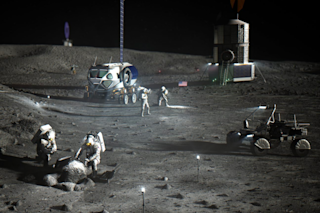NEXT>
After more than six years of exploring the Red Planet, the Mars rover Spirit will rove no more. The robotic adventurer is mired in a sand bed, and NASA has officially given up on trying to extricate it. While it will continue to operate as a "stationary research platform" for the time being, there's no denying that the rover's swashbuckling days are over. No longer will Spirit spot an interesting landmark in the distance and gamely trek towards it, with the possibility of a fresh scientific discovery around every corner and under every rock. This photo gallery is a well-deserved eulogy for Spirit, in which we'll survey its travels and achievements. In 2003, NASA's Jet Propulsion Laboratory launched Spirit and its twin rover, Opportunity, on a three-month mission to investigate Martian terrain and atmosphere on opposite sides of the planet. The solar-powered rovers surpassed NASA's wildest dreams, extending their ...













